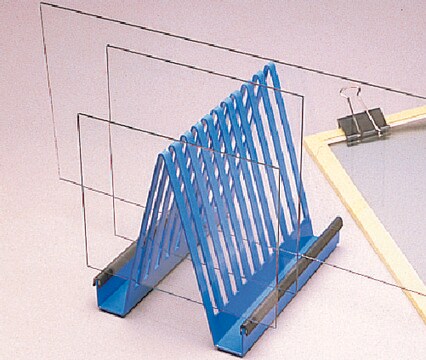07-164
Anti-phospho-H2A.X (Ser139) Antibody
Upstate®, from rabbit
Synonym(s):
H2A histone family, member Q, histone 2, H2ac, histone IIa, histone cluster 2, H2ac
About This Item
Recommended Products
biological source
rabbit
Quality Level
antibody form
purified immunoglobulin
antibody product type
primary antibodies
clone
polyclonal
species reactivity
human, vertebrates
packaging
antibody small pack of 25 μg
manufacturer/tradename
Upstate®
technique(s)
ChIP: suitable (ChIP-seq)
immunoprecipitation (IP): suitable
western blot: suitable
isotype
IgG
NCBI accession no.
UniProt accession no.
shipped in
ambient
target post-translational modification
phosphorylation (pSer139)
Gene Information
human ... HIST2H2AC(8338)
General description
Specificity
Immunogen
Application
A previous lot of this antibody successfully immunoprecipitated phosphorylated H2A.X as determined by an independent laboratory.
Quality
Western Blot Analysis:
1:500 dilution of this lot detected phospho-H2A.X on 10 μg of staurosporine treated Jurkat lysate.
Target description
Linkage
Physical form
Storage and Stability
Handling Recommendations: Upon receipt, and prior to removing the cap, centrifuge the vial and gently mix the solution. Aliquot into microcentrifuge tubes and store at -20°C.
Avoid repeated freeze/thaw cycles, which may damage IgG and affect product performance. Note: Variability in freezer temperatures below -20°C may cause glycerol-containing solutions to become frozen during storage.
Analysis Note
Staurosporine-treated Jurkat lysate, UV-treated HT-29 cells, doxorubicin-treated HT-29 cells.
Other Notes
Legal Information
Not finding the right product?
Try our Product Selector Tool.
Storage Class Code
10 - Combustible liquids
WGK
WGK 1
Certificates of Analysis (COA)
Search for Certificates of Analysis (COA) by entering the products Lot/Batch Number. Lot and Batch Numbers can be found on a product’s label following the words ‘Lot’ or ‘Batch’.
Already Own This Product?
Find documentation for the products that you have recently purchased in the Document Library.
Our team of scientists has experience in all areas of research including Life Science, Material Science, Chemical Synthesis, Chromatography, Analytical and many others.
Contact Technical Service








